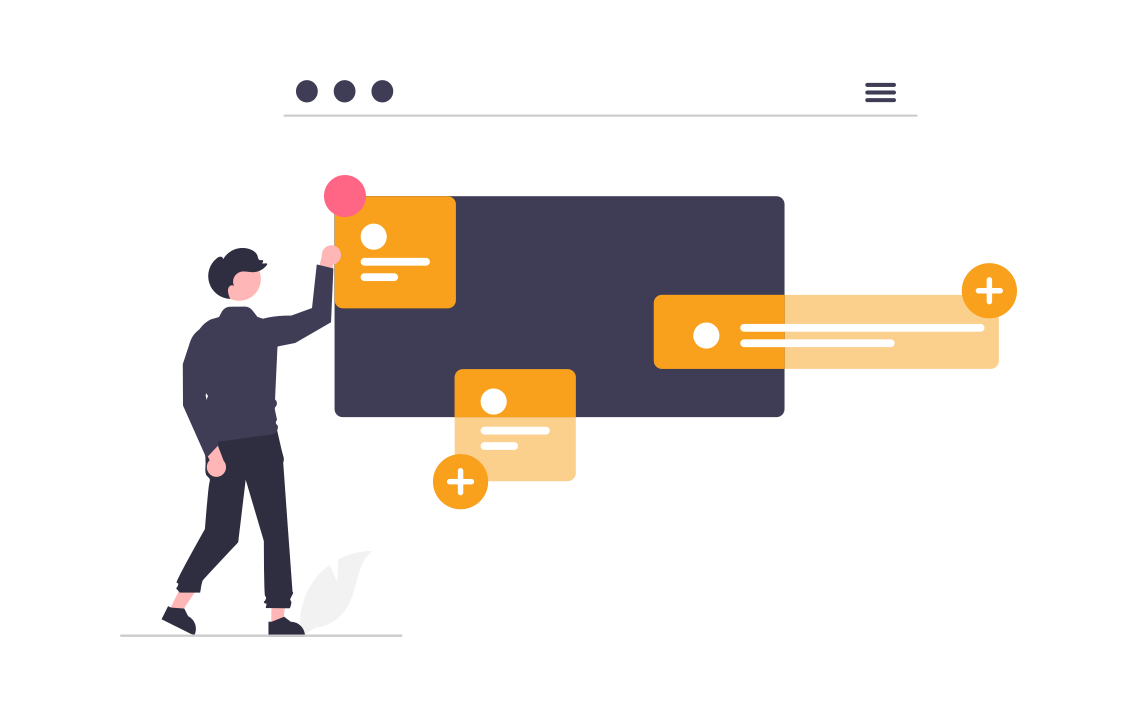Welcome back to our blog series on creating an online course. If this is your first time visiting us, check out the inaugural blog post in this series for some background on this enterprise and how it’s aimed at helping you to finally launch your own successful online course.
As a quick recap for everyone else, I’m Michael DiBiasio-Ornelas, a filmmaker and marketing consultant working with my company (Fair Share Films) to create our first online course, which we’re documenting in real-time here for our pals at Spotlightr.
The name of our course is: “The Startup Filmmaker: Bootstrapping Your Indie Career From Outside the System.”
That’s a good segue into today’s topic, because all the bootstrapping success we’ve managed up until this point as filmmakers has relied heavily on one other strategic pillar, other than executing at top quality with the actual films we make – effective marketing.
To put a finer spin on this crucial element for successfully and profitably delivering your own course (as well as ours), let’s break out the responsibilities behind a successful marketing plan a bit further.
In addition to creating the best course you can with the resources you have available, you also need to:
1 – Target your ideal customer
2 – Brand your course, along with or within your own personal or company brand
3 – Pre-market your offering(s), to grow the audience you’ll eventually want to buy your course

The Argument for Marketing Your Course Before You’ve Completed It (Or Have Even Started)
There are two basic paths we at Fair Share Films could take to marketing the course we’re building in tandem with this blog series.
Path #1 – We could build it first, and then decide how to market and sell it
Path #2 – We could begin to market and “sell” it now, while it’s being built
There are advantages to the first option. The main of these is that the creation of the course becomes the only focus, which technically affords you more time and money to “get it right.” I’ve tried it this way before with other pieces of long-form content and I’ve seen the approach work for others.
But, in recent years, I almost always opt for the second approach, for a few key reasons:
1 – There wouldn’t be a course in the first place, in this particular situation, without pre-marketing.
2 – Pre-marketing allows you to more closely home in on what your ideal customer actually wants.
3 – You’ll need the momentum of pre-marketing to succeed and to compete, in today’s crowded markets.
Much of this borrows from what the tech world calls “building in public.”
There’s much more to that idea than is relevant to our work today. But the main point to consider when it comes to building in public is the benefits of transparently sharing much of the knowledge that you’ll be building into your course – to the benefit of your current and growing audience.
At the same time, you want them to remember you and consider you an expert, so you should also do all this from under the umbrella of your also-growing brand.
Case Study Example: From $4K of Debt Financing to $500K in Pre-sales and Investments
For example, I’ve been writing blog-style posts on LinkedIn and Instagram for nearly a year, sharing about some of the lessons that I and my colleagues have learned over the course of our many years in filmmaking.
Tracking which posts generated more traffic and engagement, and watching outside interest in what I have to say on certain topics grow over that time period – led to the decision to make our course.
It’s a tactic I’ve employed time and time again, across my film releases, and the result has been measurable growth over time. I’m talking growing audience numbers from a few hundred to a few thousand, and funding totals from $4K in debt to $500K in pre-sales and investments.
So let’s return to the three pillars to your pre-marketing plan for your course, and explore them in more detail.
Targeting: Get Specific on Who Your Course is for, and How to Find Them
You can’t truly begin to successfully create and pre-market your course if you don’t know who is going to buy it. This is where a practice like the social media writing and marketing I just mentioned can come in very handy.

I’m going to assume two things about you, if you’re reading this:
– You already have an audience you’ve built, that you’re looking to further serve with your course
– You already have vetted expertise worthy of a course, that you need an audience for
Probably, some of you even fall between these two assumptions.
Whether you’re answering the question for the first time or revisiting it, however, it’s important to pop into your Notion files (or whatever system you decide to use) and write down 1) Who your course is for and, 2) Your draft plan for finding and targeting these prospective students and buyers.
Case Study Example: Defining The ICP for Our Course on “Startup Filmmaking”
Thanks to my social writing on LinkedIn and Instagram, I had a pretty good idea about our ICP.
But there’s one more tactic I want to share, that I employed partially to generate information on our ideal customer, as well as their pain points that we’ll soon address through our course.
In addition to publishing semi-regularly on both platforms, I wrote the following copy in my bio on each:
Ask how I bootstrapped $400K in pre-sales and investments as a Filmmaker, Content Creator and Strategist.
Guess what happened next?
When I write regularly, and provide value, people click on my profile. Then they read that sentence and some of them DM me. They ask how I raised the money. I offer to get on a call, and on that call I answer their questions and gain a deeper sense of their pain points, on a 1:1 basis and as a group.
In addition to helping me steer the direction of the course content itself, this practice has also helped me refine our ICP:
The Ideal Customer Profile for Our Course
1 – Demographics: Adults, predominantly ranging from early 20s to late 40s.
2 – Occupation: Aspiring filmmakers, independent filmmakers, film students, and video content creators or creative professionals in adjacent fields (e.g., writers, producers, actors) who are looking to enhance their skill set and take more control over their career
3 – Skills: A basic to strong understanding of filmmaking concepts, but not necessarily professional training. They might have self-taught skills or informal training from small projects or hobbyist work. They might also be film school graduates with a lack of real-world business training, or who are struggling to employ a strategic mindset among the very challenging economic environment of the film industry.
4 – Goals: They aspire to continually create high-quality content, and potentially break into the industry professionally. They may also want to learn more about the business side of filmmaking, including funding and distribution. More than anything, they want to get that next project made, ideally over and over again as we have been able to do.
5 – Challenges: They struggle with creating or carving out space in their lives to make their films, a lack of resources or formal training, limited networks within the industry, and uncertainty around funding and distribution.
6 – Values: They value creativity, artistic expression, storytelling, and are driven by passion for cinema. They appreciate hands-on learning, practical examples, and industry insights. They care about career sustainability in all these terms.
And when it comes to “where to find these people” – I already know.
They’ve come to me on the social platforms I chose to test, and where I already knew they lived based on my day-to-day work as a filmmaker with an audience-engagement mindset.
For your own course and business, if you don’t already know that last part, then set aside a few months to experiment. Choose two platforms that feel like the likeliest fit for your industry. Create some short-form content that provides real value, and post regularly and/or experiment with ad campaigns to test growth.
While you do this, be sure also to put some effort into branding.
Why Branding is Important When it Comes to Marketing and Selling Your Course
 Once again, some of you might already know what I’m about to say in this section. But it can still be worth a fresh look at the ideas below, even if you’re creating your course under the umbrella of an existing brand.
Once again, some of you might already know what I’m about to say in this section. But it can still be worth a fresh look at the ideas below, even if you’re creating your course under the umbrella of an existing brand.
Branding sets the tone and personality of your offerings, and presents the values of your course, helping to attract and resonate with your ideal customer. It helps differentiate your product in a crowded market, establishing trust and credibility with your target audience before they even consider purchasing.
This upfront perception and recognition can greatly enhance conversion rates when the course is launched.
Here are the key elements to consider in branding your course. Some may take some time to generate as part of your overall brand kit and approach, as you go about building the actual course. So don’t worry if you can’t get it all done right away.
1 – Course Name: Seek out a catchy, relevant name that captures the essence of what you’re offering and stands out in the market.
2 – Logo: A unique and visually appealing logo that represents the course and can be used across various platforms.
3 – Tagline: A memorable phrase that communicates the unique value proposition of your course.
4 – Color Scheme & Typography: Consistent use of colors and fonts that align with the course’s personality and appeal to your target audience.
5 – Course Description: A clear, compelling summary of what the course is about, what it covers, and what participants can expect to learn or achieve.
6 – Instructor Bio: A short, professional bio that establishes your credibility and expertise in the subject matter.
7 – Testimonials or Reviews (if available): Social proof that validates the quality and effectiveness of your course. Hint: You can offer a free private beta preview to early adopters, in exchange for this.
8 – Platform or Delivery Method: Details on where and how the course will be delivered and formatted.
9 – Course Layout/Outline: A brief overview or table of contents showing the structure and flow of the course.
10 – Visuals and Media: Relevant images, videos, or other media that give potential students a taste of the course content and style. These would show up on your web site, in social profiles, and in any other outbound communications.
As you can see, it takes a good deal of up-front work to get yourself set up as a brand.
Case Study Example: Generate a Clean, Sharp Logo in Minutes
At Fair Share Films, since our course is a Minimum Viable Product (MVP), we’re doing our best to pay close attention to each category within the limits of available resources. It’s important to note that a brand can always be updated, refined, or even relaunched – with a degree of respect for consistency.
We’re also just starting off as a formal company, so our branding is going to tend towards minimalism and (comparative) ease-of-execution.
The most important part, when it comes to branding, is to provide a neat and attractive container for your excellent content, that supports your messaging to your ICP and provides fertile ground for expansion.
We generated a simple logo with Looka, and will be integrating most of the overall branding for our company into the course itself as our first digital product. The remainder of the assets or building blocks needed will come from the notes we’re taking in our Notion project folder for the course. Looka and other tools like Canva also offer a lot of power and flexibility for generating and cataloging brand assets.
As an addendum and a final note on branding, consider that much of our answers to the ten key brand elements listed above came from a dedicated brand sprint that we conducted as a team, following this helpful blueprint from Google Ventures.
Building Audience From The Foundation of Your Branding and Targeting Work
If it seems as if we’ve already covered a lot of audience building tactics to this point, that’s because the practice (done correctly) is so deeply embedded in targeting and branding.
Still, there’s a lot more work to be done (but it’ll be worth it).
In true “building in public” fashion, the more audience-building you can do before your course is completed and made available for purchase – the better.

Following the natural evolution of your targeting and branding efforts, it’s now time to put the spotlight even more squarely on your prospective students, while you do the work to actively grow your audience base.
People are more likely to invest in your course if they feel they are part of a community or engaged in a dialogue, rather than being the recipient of a sales pitch. This is another reason why starting early is helpful. Prospective students won’t feel like you’re selling to them when you engage them online in the months ahead of your course release – because you’re not (yet). This approach helps you naturally to create a master class that sells itself by building genuine connections and providing value upfront.
And that’s a perfect transition into this next list, of what we’ve found helpful over the years when it comes to audience-building.
1. Provide Value Before Asking for Anything
 One effective way to build your audience is to provide value before asking for anything in return. By consistently sharing relevant content and knowledge with your audience, you’ll become a trusted resource and thought leader in your field.
One effective way to build your audience is to provide value before asking for anything in return. By consistently sharing relevant content and knowledge with your audience, you’ll become a trusted resource and thought leader in your field.
This trust forms the foundation for your relationship with your prospective students.
We’ve covered this practice already, in the form of my LinkedIn and Instagram posts.
2. Leverage Social Media to Engage With Your Audience
 Social media is an invaluable tool for reaching your audience and engaging with them on a more personal level. As a reminder, be sure to choose and vet platforms where your ideal customer is already active.
Social media is an invaluable tool for reaching your audience and engaging with them on a more personal level. As a reminder, be sure to choose and vet platforms where your ideal customer is already active.
Focus on quality over quantity, when it comes to platforms. You don’t need to be on all of them. It’s better to be active and engaged on a few platforms where your audience is present, than to spread yourself thin across many platforms and not be able to effectively engage with your audience.
Note as well that quantity and consistency are different things. If you can only engage with your audience once per week, make sure you do. As long as you’re providing value, people will come back to you with their attention.
3. Engage in One-on-One Conversations
 Engaging in one-on-one conversations is key to building meaningful relationships with your audience.
Engaging in one-on-one conversations is key to building meaningful relationships with your audience.
We’ve discussed this already as well. My DMs are always open to prospective buyers, who I don’t treat as customers yet. I engage with them as the human beings they are, and try to be helpful. This feels both the right thing to do and potentially beneficial to our eventual course rollout.
When our course is ready, I’ll let them know it’s available. Whether they buy or not, I’ll know I’ve done as much as I could to convince them of the value of our expertise, as consolidated in the course.
4. Create and Grow an Email List
 An email list is a direct line to your audience. It allows you to keep them updated on the progress of your course, to share relevant content, and build anticipation for the course launch.
An email list is a direct line to your audience. It allows you to keep them updated on the progress of your course, to share relevant content, and build anticipation for the course launch.
Consider offering something of value, like a free guide or resource, in exchange for the email addresses of prospective customers. This not only provides immediate value but also creates a positive association with your course from the outset. And/or regularly link to your newsletter signup form in relevant social copy.
Note: None of These Strategies or Tactics Are An Overnight Process
 Building an audience is not an overnight process. It requires patience and persistence.Targeting and branding can also take some time to get right, even with a Version 1 course like the one we’re building at Fair Share Films.
Building an audience is not an overnight process. It requires patience and persistence.Targeting and branding can also take some time to get right, even with a Version 1 course like the one we’re building at Fair Share Films.
Take the steps listed in this installment one at a time. Stay consistent in your efforts, continue to provide value and engage with your audience, and you’ll gradually see growth and momentum ahead of your course launch.
At Fair Share Films, we’re at the beginning of this journey, but the strategies we’re implementing have already shown promising results.
Whether you are early in your process like us, or seeking to translate success in other media (or IRL) to your online course offerings, the key takeaway to remember is to initiate your marketing plans as early as possible and to stay consistent.
This will help you to best set yourself up for success on release day, which is what I and Spotlightr both want for you!
What’s Up Next: Structuring Your Course
Now that we’ve done some of the foundational work in clarifying the What and Why [LINK TO FIRST POST] and Who of your course, our next task will be to turn to the How.
Next up: Establishing the structure of our courses via outlining.
Thanks for coming along for the ride. I’m excited to be on this course creation journey with you!

